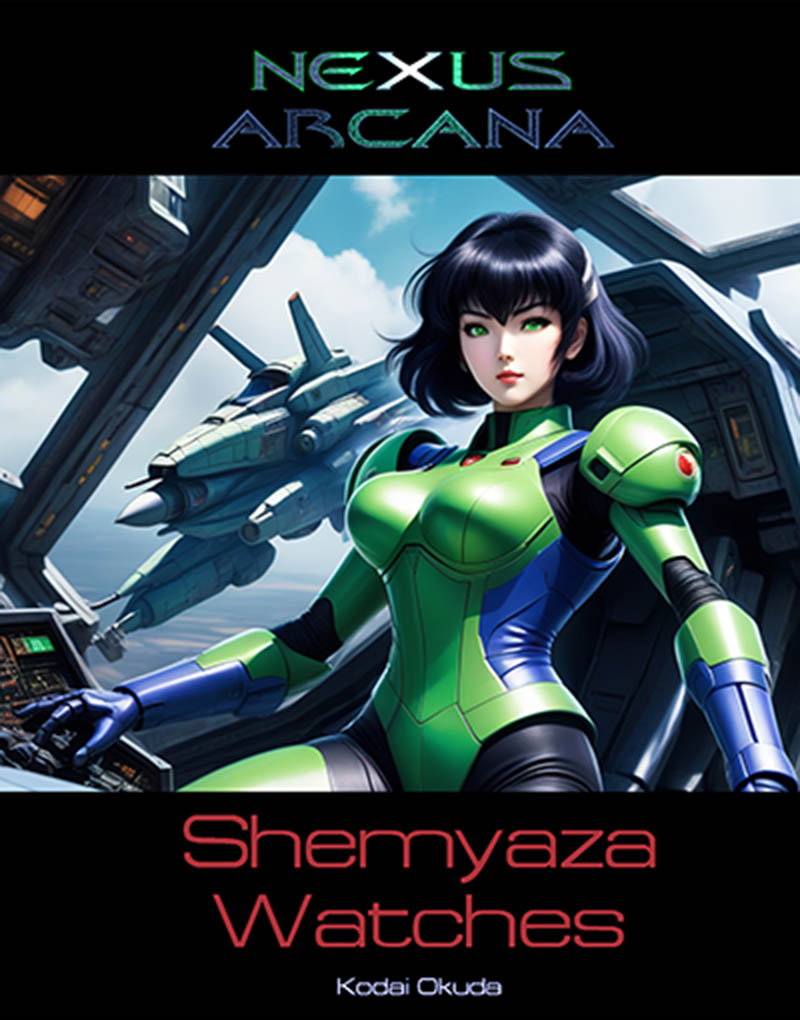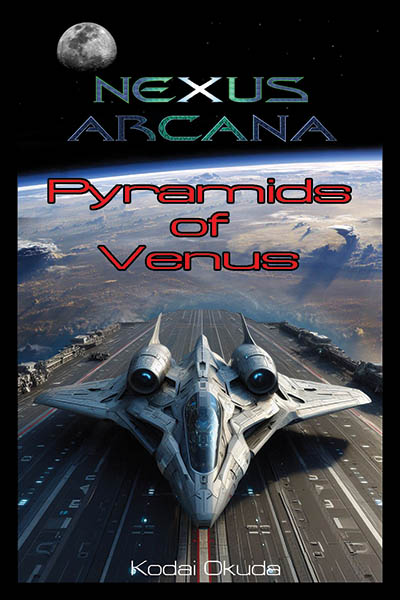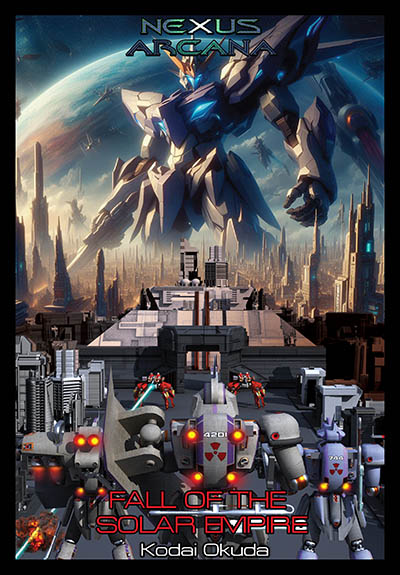Who Was John Campbell?
by , 04-16-2011 at 07:25 PM (123170 Views)
That's a good question...I hope this short article will answer it for most people.
To better understand the concept of Campbellian science fiction, one must understand who John Campbell was and how he viewed the genre of Sci-Fi.
John Woods Campbell Jr. began his career in Sci-Fi writing as a young student attending the Massachusetts Institute of Technology in 1930 with two stories published in the pulp fanzine of the day Amazing. Oddly enough, his first short story appeared in the premier issue of the magazine that he would eventually become editor of--Astounding Stories.
During the Great Depression era, Campbell flunked out of M.I.T. for failing to pass German, finished his physics degree at Duke University, and bounced around from job to job during the economic strife of that period all the while writing astronomy articles for Astounding.
He wrote Space Opera during the same time as Doc Smith's Lensman series under the pseudonymn of Don Stuart. In 1954 he published The Mightiest Machine, a space opera that was serialized in Astounding. It was during this time that Campbell had begun weaving the model for a new kind of story. It is this model that is the measure of Campbellian Science Fiction.
Two of Campbell's short stories are the embodiment of this Model: Twilight and Who Goes There?
Twighlight set the stage by incorporating the concept of a "peopled" story. In general this is the concept of plopping your reader into the middle of an ongoing story that does not end with the episode you've put him/her into, nor does it begin with said events. It is the art of writing the interesting points of a timeline within the world or worlds you've invented and peopling them with more than a series of card-board cut out characters. Backstory, detailed descriptions of hair, eye, and skin color, clothing, and other finer details are stressed in this short story more so than in some full length novels. Without spoiling too much of the story, allow me to point out that the elements of this short adventure have key Campbellian features. The idea that man will evolve into a higher form, the concept that technology will continue to advance, and that no matter how dreadful the future may become, there is always hope. In the case of Twilight this hope comes in the form of Ares Sen Kenlin--the main character, who reactivates the "thinking" machines of an Earth populated by the last remnant of mankind in the distant future.
Next is Who Goes There? A short story which was popularized in the 1980s by John Carpenter's adaptation of the tale to the silver screen in a movie called The Thing. Within this fifty-two page yarn are all the major Campbellian traits. Strong individualism is prevalent, and the very theme of the story is anti-collectivist to the extreme. The idea of a thing which absorbs all life into it and literally collectivises it, is what John Campbell is putting forward as an ultimate horror. Only through the efforts of the individual--embodied in McReady (even his name shows a man of action)--can the imposters who have been absorbed be routed out and purged. Mr. Campbell uses detailed descriptions and metaphor to describe his heros and villians within this story. McReady is a man of Bronze, like a greek god while the scientist, Blair, is a bird-like, short, balding fat man who jitters around like a squirrel. The thing itself shows a malevolent intelligence that is hell-bent on absorbing the military men of the "Big Magnet" antarctica research base and buidling an escape device that would allow it to flee the icy continent for populated regions in order to absorb all of humanity. In this way the alien thing symbolized communism/socialism in its relentless march towards totally absorbing the peoples of the world into their international despotic system of government.
As editor of Astounding, Campbell mentored a troop of Sci-Fi writers who would go on to become the best of the best of the genre. These authors learned to weave fact with fiction in a fantastic yet believable method that relied as much on science as it did imagination, which few can replicate today. This team of "hard" SF writers included Isaac Asimov, Arthur C. Clarke, Poul Anderson, and Hal Clement. However, the greatest of the Campbellian writers was Campbell's prize protégé--Robert A. Heinlein.
Robert A. Heinlein's Starship Troopers is everything a Campbellian story ought to be. It has a hive-minded, collectivist alien menace (the bugs) that seek to eradicate mankind. The story has a world political body or hegemony run by a militaristic-nationalist government that prizes the accomplishments of the individual and rewards them with citizenry for their service to the state. Starship Troopers is as much a story of military warfare of the future as it is a story of Juan Rico's personal triumph in the cause against the bugs as an individual. "Supernatural" elements such as psionics are treated as "preternatural" and thus possible within the framework of a future time. The advanced technological warmachines (powered armor) are armed with an array of weapons that include nuclear types. The standard Sci-Fi MacGuffins are present in the form of FTL drives, large spacefleets, and other pseudo-scientific technologes (when Starship Troopers was written) that are necessary to move the story along but not as fantastical as something like Astral Projection, which Edgar Rice Burroughs used to project John Carter to Mars. Heinlein also follows the Campbellian model that portrays military service as something that is honorable, not objectionable (in contrast to futurian Sci-Fi). This portrayal of military service, while used in many forms of Sci-Fi, particularly Space Opera, is hardly unique to Campbell's SF. However, where Campbellian SF diverges from other forms of Sci-Fi is the level of realism and attempts at theorizing what actual military warfare of the future would be like. Excellent examples of this contrast would be Heinlein's use of anti-starship batteries by both the bugs and mankind, the need for dropships, powerarmor/battlerobots, and the level of casualties (and how horrible they are) that would ensue in plantary invasions against an alien menace; conversely in a Space-Opera, like Alex Raymond's Flash Gordon, the combat is more like something we'd expect from a comic book than a plausible plantary assualt (Blogger's Note: Flash Gordon is still really fun though, and I do enjoy a good Space Opera); and finally in a futurian setting, warfare is treated more as a MacGuffin used to move the story along than the emphasis as to why the story is taking place. Gene Roddenberry's Star Trek is a good example of a futurian SF world in which conflicts are brief, solved through negotiation or talking, and usually have little or no long term effects on the SF world in which they take place.
Thus we have the basic elements of Campbellian SF and they are as follows:
- Ancient alien races, artifacts, or technologies are normally present.
- The use of military forces as the main protagonists (Heroes of the story) against the antagonists (who are usually alien, but not always)
- Strong characters (both male and female), who are clearly defined in detail (down to how stinky they are in Who Goes There?)
- No or very few fairy tale elements (like elves, vampires, werewolves, magic powers, dragons, etc.), with the exception of "scientifically" explained versions of these formerly supernatural beings. A good example of an explained version of a fairy-tale create are the "sci-fi" vampires from Colin Wilson's The Space Vampires.
- Strong Individualism, (usually in direct opposition to collectivism)
- Hope for the future (no nihilistic themes)
- The evolution of mankind into a better race (mentally, physically, spiritually, and emotionally; or a combination of some or all of those)
- Pro-Capitalist/Liberty, and anti-communist/socialist. Although, the argument could be made that Heinlein was partial to fascism, Campbell was certainly not. In fact he (John Campbell) was so anti-Nazis/Fascist as to have been considered pro-Semitic during the 1930s and WWII.
- Agressive solutions, not peaceful resolutions.
- Psionic ability is a must.
- Supernatural is treated as preternatural in the sense that science will prove its existance and what it is (this extends to the concept of God as in the Japanese video game series Xenosaga which has most of the Campbellian elements in it)
- MacGuffins (non-essential elements used to move the story) are kept to a minimum.
While Heinlein's Starship Troopers was certainly the epitome of the Campbellian ideal, many stories which embody the Campbellian model have come afterwards and the influence of this form of Science Fiction can still be felt today. His influence has spanned the globe. Ryosuke Takahashi's Armored Trooper Votoms was directly inspired by Starship Troopers as was Yoshiyuki Tomino's Gundam. Both are excellent examples of Japanese versions of Campbellian SF. Other stories such as Joe Haldeman's short story Hero, which appeared in Poul Anderson's Space Wars collection of short SF stories, is another excellent example of what this type of SF story ought to be.
The most recent Campbellian story has to be Bungie Entertainment's Halo series of video games. Master Chief is a cyberneticized Juan Rico walking right off the pages of Starship Troopers and into the pixelated digital world of video gaming. James Cameron's Aliens, Terminator, and Avatar are all Campbellian stories/movies, and I would like to take this moment to thank Mr. Cameron for helping keep John W. Campbell's vision of SF alive on the silver screen.
Non-Campbellian SF can be summarized as anything that is either Space Opera, like George Lucas' Star Wars (probably the greatest Space Opera to date), and anything that is futurian, like Carl Sagan's Contact or H.G. Well's War of the Worlds. While I enjoy both Space Opera, and Futurian stories, I prefer Campbellian SF. To me the so called "hard" SF is the capstone to the SF pyramid and is an essential part of SF story writing (as are the other two in my opinion).
Therefore, I shall now answer the question Who was John Campbell?
John W. Campbell was a man who perhaps inadvertantly, maybe even single-handedly, moved science fiction from the pulp magazines of "scientifiction" and Space Opera into the mainstream of literary writing while keeping the genre out of the hands of the ideologically driven futurians. At the same time Campbell used the talents of the futurians--like Isaac Asimov--to mold SF into a well balanced mix of all three disciplines of science fiction. In short, he took Sci-Fi out of the shadows of fringe entertainment and made it respectable.
-Prime Administrator







 Email Blog Entry
Email Blog Entry

